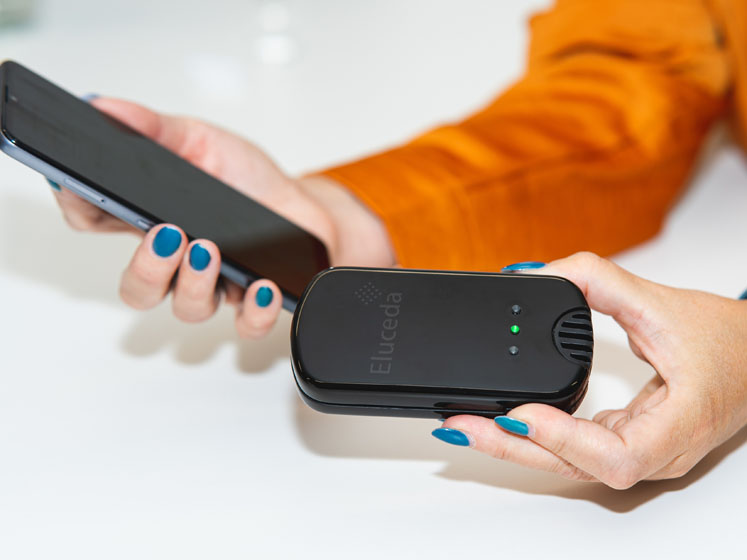Counterfeiting is not a new crime. Even the ancient Sumerians were impacted by fraudulent copper ingots more than 4500 years ago.1 In the modern day, despite great strides in technology, there continues to be an almost cat and mouse struggle between counterfeiters and the legitimate organisations trying to stop them.
As technologies develop and become more complex, so too do the fraudsters’ methods for evading detection. Matthew Harte, Group CEO of Eluceda, highlights how advances in both detection and digital technologies can solve these challenges and help to forge a powerful weapon in the fight against fake products.
Part of the difficulty experienced by anticounterfeit enforcement professionals is the reliance on a centralised testing infrastructure. Typically, when suspected counterfeit goods are detected, there are long delays whilst samples are collected, sent (often across borders) to relevant laboratories and then analysed with specialised, sometimes scarce equipment.
However, recent advances in detection technology give enforcement agents the ability to perform all of these necessary functions “in the field,” allowing for the rapid, accurate and portable authentication of genuine goods that, in turn, allows for the real-time detection of counterfeits anywhere within the pharmaceutical supply chain.
Using Eluceda’s authentication solution as an example, relevant stakeholders equipped with an E-Sens detector and a laptop can electrochemically analyse suspect samples in situ, providing results in less than 2 minutes.

The detectors require minimal training, allowing for a diverse range of professionals from customs officials to warehouse managers to investigate suspected counterfeits at all stages of the pharmaceutical supply chain.
Although this represents a powerful authentication tool that can dramatically increase the detection rates of genuine goods and dramatically decrease the time waiting for test results, the real value is in the data that the technology produces.
Knowledge is power but using it wisely is the key
Detection is just one element of anticounterfeiting. Once potentially fraudulent pharmaceuticals are discovered, agents have to track, investigate and analyse the evidence to issue warnings to consumers and, ultimately, help catch the people responsible.
This requires large amounts of data from all corners of the world. Detection technology that can provide this kind of quantitative data is therefore invaluable in anticounterfeiting operations, not least because it enables accurate reporting and a collaborative, worldwide approach to monitoring and trend identification.
To use Eluceda’s technology as an example, once more, professionals throughout the supply chain equipped with an E-Sens portable detector are not only able to quickly detect counterfeit or adulterated products in the field, but the data from each test can then be uploaded and shared instantly with other stakeholders.
The date, time and geolocation of each detection is included — allowing for a global view of where specific counterfeit products are showing up, how many of them have been detected and the rise or fall frequencies of detection. These are just a few examples of the information available.

This data contributes to the development of a live database that can be linked to other sources of information and made accessible to multiple organisations. This allows enforcement professionals from Manchester to Hanoi to work together more effectively to track counterfeit products, keeping consumers and patients safe and, ultimately, helping to catch those responsible.
As a working example, counterfeit COVID vaccines could be detected at a port warehouse in South Africa by customs officials. The location, date and unique chemical “fingerprint” of the sample is then uploaded to a global database that’s accessible by authorised stakeholders.
Enforcement agents across the world can see this data and quickly identify additional detections elsewhere, linking each data log and identifying where, when and to what degree similar examples are beginning to show up — ultimately helping to trace the spread of the counterfeit vaccines and allowing for a proactive anticounterfeiting response.
Global and connected anticounterfeiting
Counterfeiting is an international crime and thus the response from enforcement agent needs to be transnational as well.
The stakes are much higher when it comes to falsified medicines, with the World Health Organization estimating that one in ten medicines sold worldwide are counterfeit.2
Widely publicised instances such as counterfeit leukaemia drugs tend to steal the headlines, but there are many instances of serious and continuous harm being wrought by this crime.3 The prevalence of counterfeit malaria vaccines in the places it is so desperately needed is one such example that may give pause for thought.4
As with many historic issues that have long plagued industries, advances in technology represent a significant step forward in reducing the impact of counterfeit pharmaceuticals on both industry and public health. Technology that allows for rapid and global co-operation through the creation and sharing of data will help a vast range of stakeholders stay ahead of the fraudsters.
References
- https://qz.com/1364934/the-worlds-first-customer-complaint-is-almost-4000-years-old.
- www.who.int/news-room/fact-sheets/detail/substandard-and-falsified-medical-products.
- www.raps.org/news-and-articles/news-articles/2019/2/who-warns-of-falsified-versions-of-cancer-drug-icl.
- www.ncbi.nlm.nih.gov/pmc/articles/PMC3375661/.




